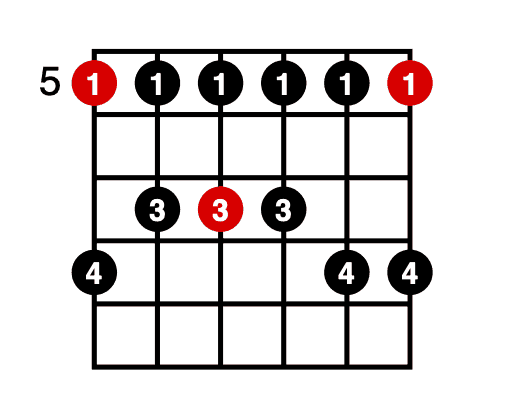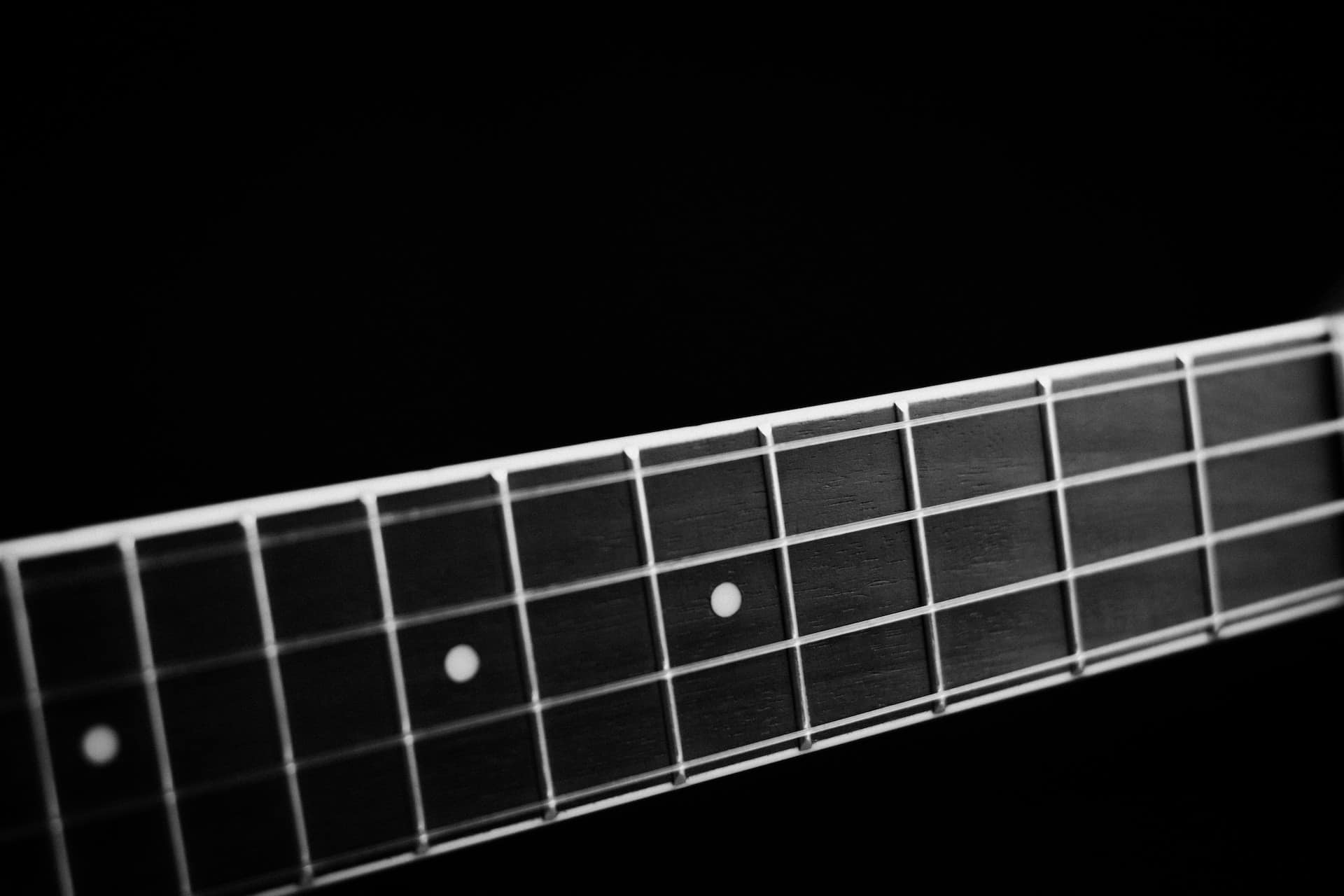Figuring out what to learn on guitar isn’t the easiest thing to do if you’ve never played! Of course, first, you need to decide what kind of guitar you want to play. Do you want to play mainly chord songs? Then you might not need to learn scales. However, if you want to pick melodies, then learning scales is a great way to get started. You might also want to learn scales if you plan to play off the cuff or do improvised solos. When you do, it’s typically best to stay within one scale. The first scale to learn on guitar is a personal choice, but you do have a few good options to choose from. First, though, you need to learn to read a scale chart.
How Do I Read a Scale Chart?
When you first look at a scale chart, it might look like gibberish. Take a deep breath! It’s not as hard as it looks. The chart represents part of your fretboard. The first thing you need to understand is how a fretboard is numbered.
Learning the Fretboard
When you’re holding the guitar like you’re ready to play, the head is on your left, where the tuning keys are. The body is on your right. The frets are the small bars that run up and down that are spaced out across the fretboard. When counting frets, zero is the one that’s right up against the head. You can’t play behind it on the head side. The next fret is one, and you keep counting up until you reach the body.
When a scale or chord says you should play on the fifth fret, you count up to that piece of metal. Then, you play on the left side of the fret, the space closest to the head. If it makes it easier, you can count spaces instead of frets. Just remember to play as close to the fret as you can. For more information about the fretboard and if you can learn the guitar fretboard in 10 Minutes, click here.
Applying Your Knowledge to a Guitar Scale Chart
When reading a scale chart, keep in mind that it’s written as if you are looking at the fretboard head-on, as if you just tipped the bottom of the guitar toward you while playing. The highest string is at the top, and the lowest string is at the bottom. The frets will be numbered, so you can count out to the correct fret to begin your scale. If they’re not numbered, then assume it’s the part of the fretboard up against the head. Some scale charts are turned, so the strings are going vertically, and the frets are going horizontally. In that case, the head is always at the top. That’s how we use the scale charts and the chord charts here on All Stringed.
Identifying the Root Notes
When looking at a scale chart, you’ll notice a couple of notes are filled in or, in some cases, noted in red. These notes are the root notes for your scale. The root notes tell you the key, such as the key of A.
Understanding the Numbers Over the Notes
The numbers tell you what finger to use to play the note. The one indicates the index finger, which you use to hold down the root fret. Two is for your middle finger, while three is for your ring finger. You’ll play four with your pinkie.
How Do I Play a Scale?
Picking what scale to start with is really up to you. However, a common one, to begin with, is the minor pentatonic scale. It’s used in a wide variety of music. Plus, you can move it up and down your fretboard to change keys, though the most common position is the root on the fifth fret (A Minor Pentatonic).
Figuring Out Where to Put Your Root Finger on the Minor Pentatonic Scale
With many scales, you will hold one finger down on the same fret over all strings. This will give you some of the notes on your scale. Then, you’ll use your other fingers to play the other notes on the scale. To play the minor pentatonic scale in the key of A, your index finger is always on the fifth fret across all the strings. It will take some practice to get this down, as you will need to build up strength in this finger to get a clean sound. You will keep your index finger at this position the whole time you are playing the scale.

Finding the First Note
The first note is always the lowest note. The lowest note on the scale chart will be on the biggest string closest to the head. In the minor pentatonic scale in the key of A, the first note is the A. You’re already holding it down with your index finger. All you need to do is pluck the E string, and you’ve played the first note.
Moving Up the Scale
To find the next note, look for the next lowest note on the scale chart. In the case of the minor pentatonic scale in the key of A, that’s the C note on the eighth fret. Use your pinkie to hold down this string (while keeping your index finger in place on the fifth fret). Then, pluck the E string again. This note is the next one on the scale. Keep going up the scale, reading left to right from the bottom to the top (in a chart where the strings are horizontal). In a chart where the strings are vertical (like in the charts we use, read top to bottom and then left to right.
Practicing the Scale
Once you figure out what the notes are, practice going up and down the scale. Start at the bottom note and go through all the notes up to the highest note. Next, start at the top note and go to the bottom note. Keep slowly going back and forth, working the scale into your muscle memory. It helps to practice scales when you’re warming up for a practice session because it keeps your fingers nimble and commits the scales to memory.
Scales may sound like they’re difficult, but once you learn to read a scale chart, you’ll quickly get the hang of playing them. The minor pentatonic scale is a great first scale to learn on guitar because of its versatility. Scales may sound boring, but you can use them to improvise solos. Staying within the scale will help you jive with what’s being played in the background. Don’t get discouraged if it seems confusing at first. With a little hard work, you’ll have your first scale down in no time.



